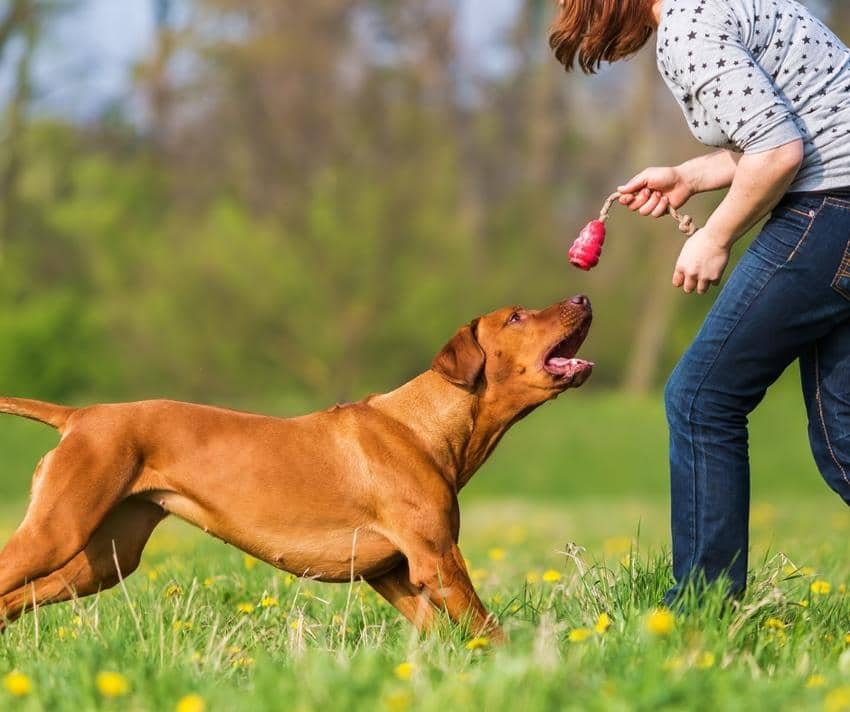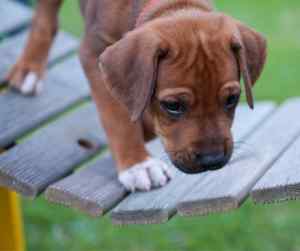
Training Your Rhodesian Ridgeback – From Puppy to Adult and Beyond
Introduction: The Importance of Training for Rhodesian Ridgebacks
Training is an essential aspect of owning a Rhodesian Ridgeback. These majestic dogs are known for their intelligence, strength, and independence, making proper training crucial for their well-being and the harmony of your household. Training not only helps to establish boundaries and ensure obedience but also strengthens the bond between you and your Ridgeback. In this article, we will explore the various aspects of training your Rhodesian Ridgeback, from puppyhood to adulthood and beyond.
Understanding the Rhodesian Ridgeback Breed: Key Traits and Characteristics
Before diving into dog training techniques, it is important to understand the breed-specific traits and characteristics of Rhodesian Ridgebacks.
Originally bred in Southern Africa for hunting and guarding, Ridgebacks are known for their loyalty, courage, and protective nature. They are intelligent dogs with a strong prey drive and a natural inclination to be independent thinkers. Recognizing these traits will help you tailor your training methods to suit your Ridgeback’s unique needs.
 Starting Early: Training Tips for Rhodesian Ridgeback Puppies
Starting Early: Training Tips for Rhodesian Ridgeback Puppies
Training should begin as early as possible to establish good habits and prevent behavioral issues. Start with basic commands such as sit, stay, and come.
Use positive reinforcement techniques, such as treats and praise, to reward desired behaviors. Consistency is key, so make sure to set aside regular training sessions and practice patience. Remember that puppies have short attention spans, so keep training sessions short and engaging.
Basic Obedience Training: Teaching Commands and Establishing Boundaries
Basic obedience training is crucial for a well-behaved Rhodesian Ridgeback. Teach your dog commands like “sit,” “stay,” “down,” and “leave it.” These commands will not only make your life easier but also ensure the safety of your Ridgeback and those around them. Consistency, positive reinforcement, and repetition are essential in this phase of training. Use treats, toys, and praise to reward your Ridgeback for following commands correctly.
 Socialization: Helping Your Rhodesian Ridgeback Interact with People and Other Animals
Socialization: Helping Your Rhodesian Ridgeback Interact with People and Other Animals
Socialization is a vital aspect of training for Rhodesian Ridgebacks. Early and positive exposure to various people, animals, and environments will help your Ridgeback develop into a well-rounded and confident dog. Take your puppy to puppy classes, arrange playdates with other dogs, and introduce them to different environments, sights, and sounds. This will help prevent fear-based aggression and ensure that your Ridgeback is comfortable in various social situations.
House Training: Tips and Techniques for a Clean and Well-Behaved Ridgeback
House training is an essential part of owning a Rhodesian Ridgeback. Start by establishing a routine and taking your puppy outside frequently, especially after meals, naps, and playtime. Use positive reinforcement, such as treats and praise, to reward your Ridgeback for eliminating outside. Consistency, patience, and supervision are key during this process. Accidents may happen, but with time and consistency, your Ridgeback will learn to associate going outside with positive reinforcement.
Leash Training: Teaching Your Rhodesian Ridgeback to Walk Nicely on a Leash
Leash training is crucial for the safety of your Rhodesian Ridgeback and others. Start by introducing your puppy to a leash and collar gradually. Begin in a quiet, distraction-free environment and reward your Ridgeback for walking calmly beside you.
Use positive reinforcement and redirect their attention if they pull or become distracted. Consistency and patience are essential during leash training. Gradually increase the difficulty level by introducing distractions and practicing in different environments.
 Advanced Training: Taking Your Ridgeback’s Skills to the Next Level
Advanced Training: Taking Your Ridgeback’s Skills to the Next Level
Once your Rhodesian Ridgeback has mastered basic obedience commands, you can move on to advanced training. This can include tricks, agility training, or even scent work. Advanced training not only provides mental stimulation but also strengthens the bond between you and your Ridgeback. Seek professional guidance if needed, as advanced training requires expertise and specialized techniques.
Mental Stimulation: Keeping Your Rhodesian Ridgeback’s Mind Sharp and Active
Rhodesian Ridgebacks are intelligent dogs that require mental stimulation to prevent boredom and destructive behaviors. Engage your Ridgeback’s mind through puzzle toys, interactive games, and obedience training sessions. Incorporate new challenges and activities regularly to keep their minds sharp and active. Mental stimulation is just as important as physical exercise for a happy and well-rounded Ridgeback.
Problem Behaviors: Addressing Common Issues in Rhodesian Ridgebacks
Like any breed, Rhodesian Ridgebacks may exhibit problem behaviors such as excessive barking, digging, or separation anxiety. Addressing these issues requires patience, consistency, and positive reinforcement. Seek professional help if needed, as some behaviors may require specialized training techniques. Remember that punishment-based training methods can be counterproductive and may worsen the problem behavior.
Training for Specific Activities: Agility, Tracking, and More
Rhodesian Ridgebacks excel in various activities such as agility, tracking, and obedience trials. These activities provide mental and physical stimulation while showcasing your Ridgeback’s skills. Seek out training clubs or classes that specialize in these activities to learn the specific techniques and skills required. Training for specific activities can be a fun and rewarding way to bond with your Ridgeback and showcase their abilities.
 Training for Life: Maintaining a Well-Trained Rhodesian Ridgeback into Adulthood and Beyond
Training for Life: Maintaining a Well-Trained Rhodesian Ridgeback into Adulthood and Beyond
Training should not stop once your Rhodesian Ridgeback reaches adulthood. Regular reinforcement of commands, continued socialization, and mental stimulation are essential for maintaining a well-trained Ridgeback. Keep training sessions fun and engaging to ensure your Ridgeback’s continued enthusiasm. Remember that training is an ongoing process that evolves as your Ridgeback grows and develops.
In conclusion, training your Rhodesian Ridgeback is a lifelong commitment that requires patience, consistency, and positive reinforcement. Understanding the breed-specific traits and characteristics of Ridgebacks will help tailor your training methods to suit their needs. Start training early, establish boundaries, and focus on basic obedience commands. Socialize your Ridgeback, house train them, and teach them to walk nicely on a leash.
Advance their training, provide mental stimulation, and address any problem behaviors that may arise. Finally, maintain a well-trained Ridgeback into adulthood and beyond through regular reinforcement and continued training. With dedication and proper training, your Rhodesian Ridgeback will become a well-behaved and happy companion.

